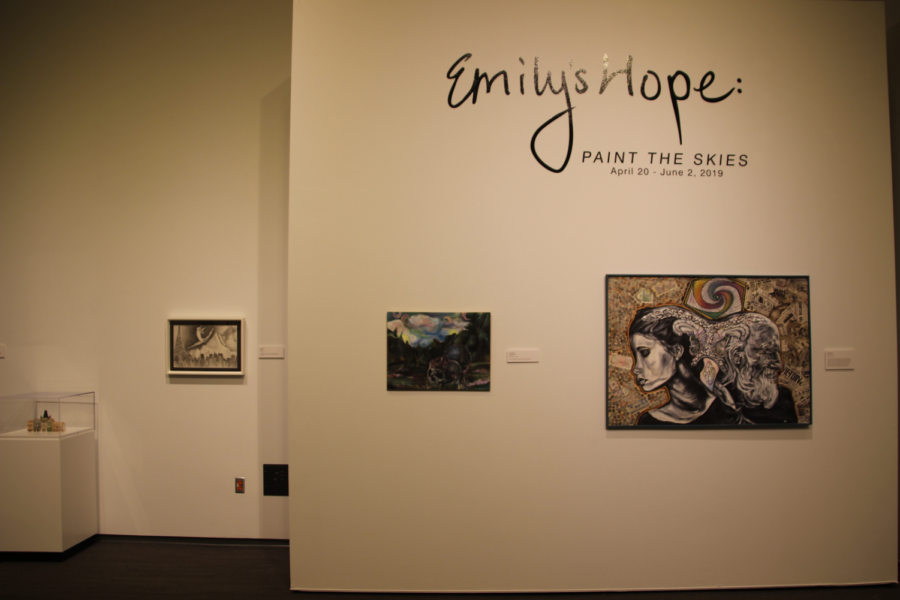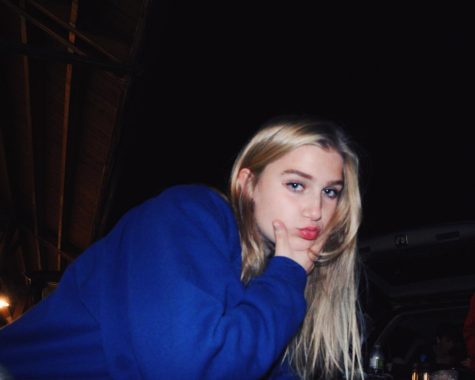Art and awareness: A look at ‘Emily’s Hope’ and the opioid epidemic
Mara Fendrich
May 7, 2019
Following the passing of Sioux Falls-born artist Emily Groth, her family has created an art exhibit entitled “Emily’s Hope: Paint the Skies,” now showing at the Washington Pavillion through June 2.
The exhibit includes artwork from both Emily and her sister Abby, a senior at LHS, who has created a multitude of pieces based off the Opioid epidemic. With overdose now being the leading cause of death in Americans under 50, “Emily’s Hope” aims to spread awareness towards the problem and its road to recovery.
Angela Kennecke is Emily’s mother and a local figure, known for her work as a KELOLAND news anchor. In the past year, she has opened up about Emily’s passing and the underlying crisis.
“When I found out what she’d been doing-the cause [of death]-it was unbelievable to me,” said Kennecke at the exhibit’s opening night. “The fact that my daughter would be using heroin and needles-my beautiful daughter who was very privileged, had every opportunity in life to have a great life-had gone down this road. It was shocking to me.”
As the Groth family has proven, the opioid crisis in America is not exclusive to one demographic; it is an issue that affects everyone.
“There are a lot of stereotypes that all drug addicts are a certain type of person, but the truth is that it can be anyone,” said Abby Groth. “We need to stop punishing addicts and start thinking of it as more of a disease.”
As Abby creates both in and outside the walls of LHS, her sister continues to be a source of inspiration and passion.
“Her art was so unique and so different that watching her grow up and evolve as an artist was a big inspiration for me,” said Groth. “Right when my sister died, my mom wanted to show her art to people because it was so amazing and [she wanted] to spread awareness.”
Awareness for America’s opioid epidemic is, in large part, in relation to fentanyl poisoning. Fentanyl is a drug related and often mixed into heroin as a cheap way to get high, and there is an extremely fine line between a relatively safe dose and a deadly one.
“That fentanyl killed her almost instantly after she injected it,” said Kennecke. “No matter what happens to [the people responsible], no matter who’s charged or if anybody is charged directly with her death, while they say they know who she got it from, nothing will ever bring her back.”
Despite the tragedy, the Groth family has taken the opportunity to create something beautiful to inspire a true change, whether it be in the community or on a larger scale.
“If just one person hears me, if just one person does one thing to save a life, then I don’t care about a million naysayers or people who don’t understand,” said Kennecke. “I just care about that one mother that I can stop from experiencing the pain that I have.”









